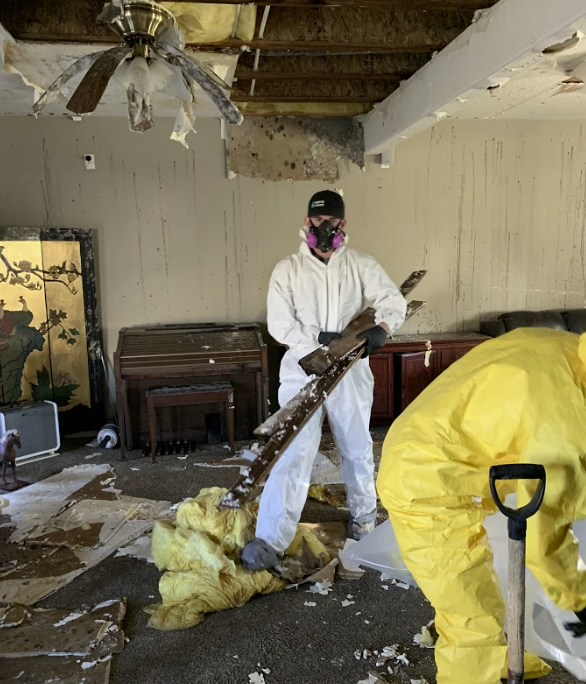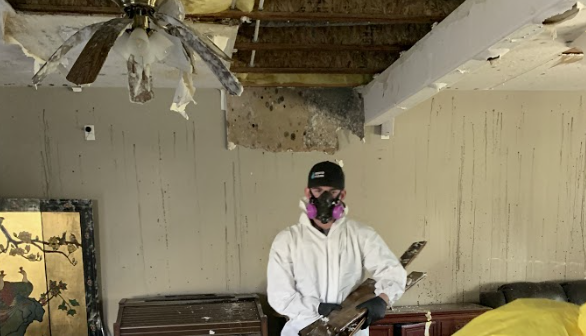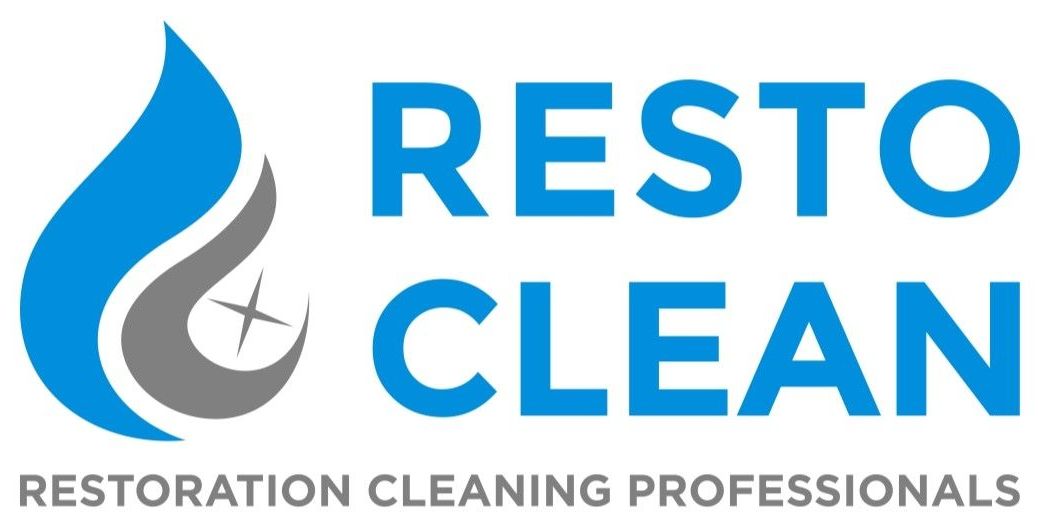Get in touch
555-555-5555
mymail@mailservice.com
Blog

By Daisy Wick
•
November 2, 2023
A fire is a devastating event that can leave behind not only physical damage but also emotional scars. When the flames are finally extinguished, the road to recovery begins. It's essential to understand the importance of professional fire damage restoration and learn about effective ways to prevent such disasters in the first place. Why Professional Fire Damage Restoration Matters When a fire engulfs your home, the aftermath can be overwhelming. The consequences go beyond charred walls and burnt belongings; there are hidden dangers that only professionals can manage effectively: Safety: Fire-damaged structures can be unstable, posing a significant risk to anyone attempting to enter. Professional restoration teams are equipped to assess the structural integrity and ensure it's safe to enter the premises. Smoke and Soot: Smoke and soot damage extends far beyond the visible areas. They can penetrate walls, HVAC systems, and even ductwork. Professionals have the tools and expertise to thoroughly clean and deodorize affected areas. Water Damage: Often, firefighting efforts involve significant water usage. This can lead to water damage, mold growth, and further structural issues. Restoration experts can mitigate water damage and prevent mold infestations. Content Restoration: Fire-damaged personal belongings often carry immense sentimental value. Professional restoration services can salvage, clean, and restore items that might otherwise be lost forever. Insurance Claims: Dealing with insurance after a fire can be complex. Restoration professionals can document the damage, provide accurate estimates, and communicate with insurance adjusters to streamline the claims process. Thorough Cleanup: Fire damage is not limited to what's visible. Professionals ensure that hidden hazards and toxins, like asbestos or lead, are properly managed during the restoration process. Preventing Fire Damage: Safety First While professional fire damage restoration is vital after a fire, preventing a fire in the first place is even more crucial. Here are some key steps to minimize the risk of fire: Install Smoke Alarms: Ensure you have working smoke alarms on every level of your home and inside each bedroom. Regularly check and replace batteries. Fire Extinguishers: Place fire extinguishers in key areas like the kitchen, garage, and near heating appliances. Know how to use them. Electrical Safety: Regularly inspect electrical wiring and appliances for signs of wear or damage. Avoid overloading circuits and extension cords. Safe Cooking Practices: Stay vigilant in the kitchen while cooking. Keep flammable materials away from the stove and turn off appliances when not in use. Heating Safety: Maintain heating systems, fireplaces, and chimneys. Keep space heaters at a safe distance from flammable materials. Candle Caution: Use candles with care, keeping them away from curtains and other flammable objects. Smoking Safety: If you smoke, do so outdoors. Use deep, sturdy ashtrays, and ensure cigarettes are fully extinguished. Escape Plan: Develop and practice a fire escape plan with your family. Ensure all members know multiple ways to exit the home. Fire damage can be catastrophic, but with prevention and professional restoration, you can move forward and rebuild your life after a fire. Safety awareness and preparation are your best allies in reducing the risk of such a devastating event.

By Daisy Wick
•
September 11, 2023
Mold damage is another homeowner's headache. Whether it's the result of a hidden leak, poor ventilation, or high humidity, mold can be a persistent and potentially hazardous problem in your home. When mold damage surfaces, acting promptly is essential to contain the issue, prevent its spread, and ensure a safe and healthy living environment. In this blog post, we will walk you through the steps to handle mold damage in your home as soon as it becomes apparent. 1. Safety First Prioritize safety when dealing with mold damage. Ensure that the affected area is safe to enter. If you're dealing with extensive mold growth or have underlying health concerns, it may be best to leave the cleanup to professionals who have the necessary protective equipment and expertise. 2. Identify and Address the Source Identify the source of the moisture that led to the mold growth and address it. This could involve fixing leaks, improving ventilation, or reducing humidity levels. Addressing the source is crucial to prevent mold from returning. 3. Document the Damage Before you start cleaning up or making any repairs, document the mold damage. Take clear photographs or videos of the affected areas. This documentation will be useful for insurance claims or for showing professionals the extent of the problem. 4. Remove Affected Materials Mold often infiltrates porous materials like drywall, insulation, and carpeting. In severe cases, these materials may need to be removed and replaced. It's crucial to discard affected materials properly to prevent further contamination. 5. Clean and Disinfect Clean and disinfect the affected areas with mold-specific cleaning products. This will help kill existing mold and prevent its return. Be thorough in your cleaning, paying attention to walls, ceilings, and any other surfaces where mold has appeared. 6. Ventilate and Dehumidify Promote proper ventilation and reduce humidity levels in your home to discourage mold growth. Use fans, dehumidifiers, and open windows to improve air circulation and maintain optimal indoor conditions. 7. Assess Structural Damage Inspect your home's structure for any damage caused by mold. Look for signs of weakened structures, such as rotting wood or compromised drywall. Address any structural issues promptly to prevent further damage. 8. Contact Your Insurance Company If the mold damage is extensive or resulted from a covered event, contact your insurance company to report the issue and begin the claims process. Providing them with documentation and photographs will aid in the claims process. 9. Prevent Future Mold Issues To prevent future mold problems, continue to address the underlying causes of moisture and humidity in your home. Regularly inspect and maintain areas prone to mold growth, such as bathrooms, basements, and crawl spaces. Install proper ventilation and consider using mold-resistant building materials. In conclusion, mold damage in your home requires swift action to contain and eliminate the problem. By following these steps, you can effectively handle mold damage, protect your property, and create a healthier living environment for you and your family. Remember that for extensive mold issues or when safety is a concern, it's best to seek professional assistance. Acting promptly is vital to successfully managing mold damage in your home.

By Daisy Wick
•
August 11, 2023
Mold, a common and often hidden intruder, can find its way into any home, creating an array of health risks and structural concerns. Nampa, with its humid climate, is especially susceptible to mold growth. In this blog, we delve into the importance of mold removal, its potential impacts, and how professional services in Nampa can restore your home to a safe and healthy environment. The Stealthy Intruder: Understanding Mold: Mold thrives in damp, humid conditions, making Nampa's climate a breeding ground. It can grow unseen behind walls, under floors, and in ceilings, posing a significant threat. Left unchecked, mold can damage your property's structural integrity and impact indoor air quality, potentially causing respiratory problems, allergies, and other health issues. Health and Home Implications: The Dangers of Mold: Mold spores can trigger allergic reactions and worsen existing respiratory conditions. In addition to health risks, mold can weaken building materials over time, compromising the safety of your home. Addressing mold growth promptly is vital to prevent both health concerns and costly structural damage. The Professional Approach: Mold Removal Services in Nampa: While DIY methods may seem tempting, mold removal is best left to professionals in Nampa. Certified mold removal experts possess the knowledge, experience, and specialized equipment to effectively locate and eliminate mold colonies. Their thorough approach includes containment, removal, disinfection, and preventive measures to ensure the mold doesn't return. Comprehensive Assessment: Uncovering Hidden Threats: Professional mold removal begins with a comprehensive assessment of your property. Trained experts can identify hidden mold sources, determine the extent of the infestation, and develop a tailored plan for removal. This step is crucial to ensuring that all mold is identified and eradicated. Protecting Your Health: Safety First: DIY mold removal attempts can release mold spores into the air, exacerbating health risks. Professionals in Nampa adhere to strict safety protocols to prevent cross-contamination and ensure the well-being of both occupants and themselves during the removal process. Preventing Recurrence: The Key to Long-Term Relief: Effective mold removal goes beyond eradicating the current infestation; it involves addressing the underlying moisture issues that fostered its growth. Professionals can provide recommendations to prevent future mold problems, which might include improving ventilation, addressing leaks, and maintaining optimal indoor humidity levels. Peace of Mind and a Healthy Home: Mold removal services in Nampa don't just restore your home; they restore your peace of mind. By eradicating mold and providing expert guidance on preventive measures, professionals ensure a safe and healthy living environment for you and your family. Conclusion: Mold removal in Nampa is more than just a cosmetic fix – it's an investment in your health and the longevity of your home. Addressing mold growth promptly and effectively with the help of professional services ensures a safe and comfortable living space. Don't let mold compromise your well-being – contact trusted mold removal experts in Nampa today and take the first step towards a healthier home.

